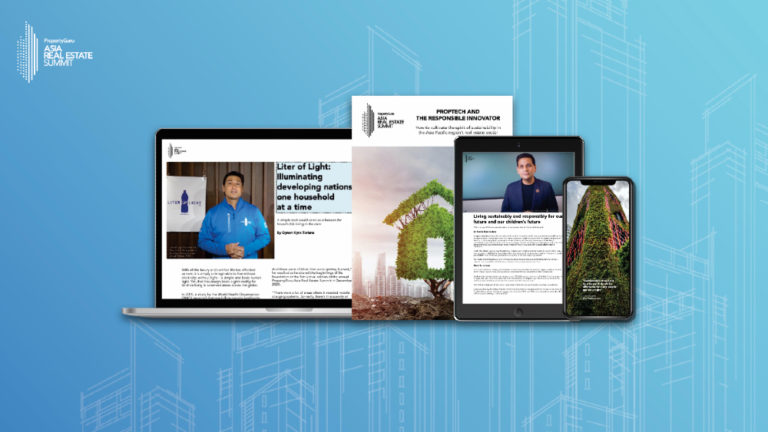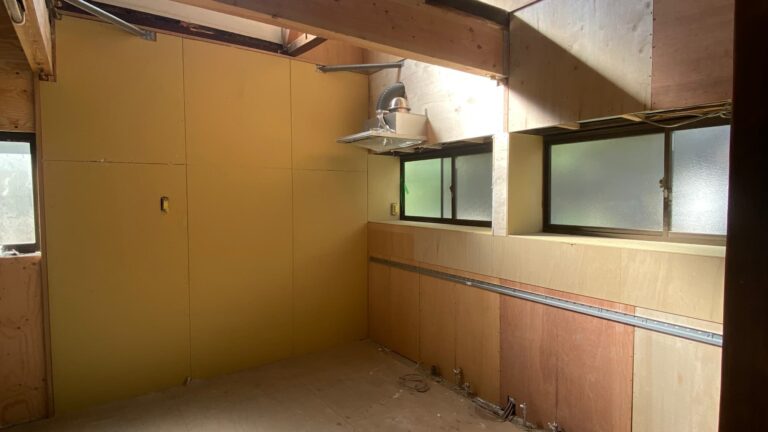Building affordability in our megacities: Challenges and strategies for key Asian cities
This article is based on the Expert Talk session at the PropertyGuru Asia Real Estate Summit originally presented on 7 December 2023.
The obstacles to affording a house in Asian cities and the solutions to help overcome them

Housing affordability is a pressing issue in many of today’s major Asian cities. And as urbanisation accelerates, it becomes even more complex to provide affordable housing. This article aims to analyse some common issues and recommend best practices in terms of housing affordability in several key Asian cities.
Background and key challenges
Some key challenges in building affordability are linked to the United Nations Sustainable Development Goal (UNSDG) 11, which refers to making cities and human settlements inclusive, safe, resilient and sustainable. Our cities represent the future of global living and this is true for key Asian Cities. According to the United Nations, the world’s population reached eight billion in 2022, with over half of the population living in urban areas. These numbers, however, are expected to rise, with 70% of people expected to live in cities by 2050. Currently, approximately 1.1 billion people currently live in slums or slum-like conditions in cities around the world, with two billion more expected in the next 30 years. Since the implementation of the SDGs in 2015, there has been some progress and improvements. But some key challenges remain, such as urban sprawl management (including issues of slums), air pollution, limited open public spaces in cities, and the lack of convenient access to public transportation.
Defining and measuring housing affordability
To develop, monitor, and measure housing affordability accurately, we will broadly include two main components:
Rental affordability – This refers to the ability of an individual or household to pay monthly rent comfortably without financial strain, while enjoying a reasonable standard of living to meet other essential expenses such as food, healthcare, and transportation, and still afford some savings. Rental affordability is typically measured as a percentage of household income spent on rent. When a household spends more than the allotted portion of its income on rent, the household is considered “rent burdened.”
Home purchase affordability – This focuses on the capacity of individuals or households to buy a home and manage home loan repayments without significant financial stress. The factors to be considered here includes downpayment amount requirements, mortgage loan terms, interest rates and conditions, and the debt-to-income ratio of a particular household.
To measure housing affordability, several models are commonly utilised, including the median multiple income model, the housing cost burden model, and the residual income model. When it comes to rental or home purchase spending, the rule of thumb is that it should not exceed one-third, or approximately 30 percent, of monthly income. Exceeding this threshold can lead to financial strain and affect overall well-being.
Summary of issues in selected key Asian cities
Singapore
Singapore has one of the highest property prices in the world due to factors such as limited land supply, high demand, and speculative investment. Housing affordability challenges in Singapore stem from limited land available for development despite a very high demand for housing and high cost of land and construction. Other challenges include income disparities, or the income inequality between different segments of society. Housing loans and mortgage rates are also challenge, and these are caused by fluctuations in mortgage interest rates and high property prices, causing purchasers to take on a significant debt to purchase a home. Lastly, government regulations pose a challenge, particularly with the Singapore Government playing a significant role in managing the market, e.g., through cooling measures. Singapore’s Housing Development Board (HDB) provides a successful model of affordable housing. Despite incurring significant costs, including a reported deficit of over SGD 5 billion in 2022, the government ensures housing access through subsidies and grants for new home buyers, helping young couples in particular enter the property market.
Hong Kong
With only about 20 to 30 percent of the island developed, Hong Kong faces severe housing affordability issues mainly due to limited land supply, high population density, and high demand for housing. Other issues include small living spaces, where residential properties are too small and expensive per square foot (the average living space per person is much smaller), leading to cramped living conditions compared to other major cities. Additionally, high property prices make Hong Kong one of the most expensive places globally driven by the high cost of land and strong demand from mainland Chinese buyers, exacerbated by the low supply.
Public housing shortages are also a significant challenge, with demand far exceeding supply, resulting in long waiting times for public rental housing and subsidised flats. You people, in particular, face difficulties getting on the property ladder, struggling to save enough for down payments and/or to qualify for mortgage due to high prices. The Hong Kong Government collaborates with the Urban Redevelopment Authority (URA) and private developers to supply housing, although the high density of living continues to pose challenges.
Malaysia (Kuala Lumpur)
Like many rapidly urbanising cities, Kuala Lumpur, Malaysia’s capital city, faces significant challenges in housing affordability similar to those in Singapore and Hong Kong. Kuala Lumpur’s challenges include high property prices due to increasing land price and high demand in urban areas and stagnant wages, where property prices have risen faster than wages, impacting both property purchases and rentals. Moreover, there are shortages in public and affordable housing, with an inadequate supply of affordable housing and government-subsidised housing for those in need. The high cost of living in Kuala Lumpur is also a factor — residents in the city need to allocate more for utilities, transportation, and daily necessities, which impacts their disposal income for housing.
Malaysia’s federal and state governments work together to address housing affordability. For instance, policies like the PR1MA scheme and mandatory affordable home components for developers aim to balance the market. Interestingly, recent trends in the past six months show a decline in property overhang, indicating improved affordability.
Strategies for developing housing affordability
Singapore
The Singapore Government has implemented several strategies to address housing affordability, ensuring that its citizens have access to quality housing despite land constraints and a high population density. Key initiatives include increasing the supply of various categories of affordable housing through public-private partnerships and joint ventures. In Singapore, the HDB plays a crucial role in providing public housing options through both rental and the sale of subsidised flats.
The government also provides grants and financing assistance. For instance, HDB Grants and Subsidies assist eligible Singaporeans in purchasing their first HDB flat and facilitate housing loan policies through the Monetary Authority of Singapore (MAS) and the Central Provident Fund (CPF) Board. In addition, the Singapore Government encourages the continual upgrading and improvement of older HDB estates through the Home Improvement Program (HIP) and the Neighbourhood Renewal Program (NRP). These strategies highlight Singapore’s proactive approach to housing affordability, combining public housing provision with financial assistance, regulatory measures, and sustainable urban planning to ensure a high quality of life for its residents.
Hong Kong
In Hong Kong, various strategies are developed to ensure housing affordability. One such strategy is government grants provided through the Home Ownership Scheme (HOS), allowing for the sale of subsidised flats below market prices to eligible residents who meet specific criteria. Subsidised Rental Housing is also provided in the form of public rental housing for low-income families and individuals.
In terms of financing, the Mortgage Insurance Programme (MIP) helps homebuyers with insufficient down payments or income secure mortgages from banks. Land policies are also constantly being reviewed by the Hong Kong Government to ensure a steady supply of land for housing development, including re-zoning of land use and increasing land available for residential purposes. These comprehensive strategies aim to improve housing affordability and accessibility across different income groups in Hong Kong. However, challenges such as land scarcity and high demand continue to necessitate ongoing efforts and adjustments in policy and implementation.
Malaysia (Kuala Lumpur)
In Malaysia, particularly in Kuala Lumpur, the Government and the local authorities in Kuala Lumpur have implemented several strategies to increase the supply of public housing and affordable housing through Housing Programs: Program Perumahan Rakyat – PPR and 1Malaysia People’s Housing Program – PR1MA.
The government also provides grants and financing assistance such as the MyHome Scheme and Youth Housing Scheme, which offer financial assistance to first time home buyers and young adults. The government is starting to implement an integrated housing database to monitor housing supply and demand and to respond to changing demographics and market needs more effectively. Urban renewal and land use policies are also constantly being reviewed to ensure that land, infrastructure, and urban renewal projects are being deployed more efficiently. These strategies reflect Kuala Lumpur’s multifaceted approach to tackling housing affordability, combining direct financial support, regulatory measures, and strategic planning to create a more inclusive and accessible housing market for all residents.
Housing affordability in key Asian cities is a multifaceted issue influenced by income levels, market conditions, housing costs, and government policies. Effective strategies to address these challenges require a collaborative approach involving policymakers, developers, and the community. Note that many of these governments strategically adjust their property stamp duty and mortgage interest rates depending on housing and market conditions. This strategy may be deployed to cool down certain markets, such as Singapore’s Additional Buyer’s Stamp Duty – ABSD of up to 60 percent for foreign buyers.
The rough path to affordable housing
Clearly, the road to affordable housing is complex and requires continuous effort and innovation. This means that the quest for affordable housing will remain a priority. By leveraging data, embracing innovation, and fostering collaboration, we can make significant strides toward building more inclusive and affordable urban environments. This is not just a policy challenge but a moral imperative, as ensuring that all residents have access to affordable housing is essential for cities’ social and economic well-being.
While certain models such as the Hong Kong Housing Authority (HKHA) and Hong Kong Housing Society (HKHS) as well as Singapore’s Housing Development Board (HDB) provide valuable lessons, each city must tailor its approach to its unique context. Through innovative construction technologies and constant improvement in exploring best practices, we hope to create urban spaces where everyone, regardless of their financial status, can afford a place to call home, in line with the United Nations Sustainable Development Goal 11 (SDG 11) aims to “make cities and human settlements inclusive, safe, resilient, and sustainable.”
This article was originally published on ARES White Paper Volume 4. For more information, visit AsiaRealEstateSummit.com or email [email protected].
Recommended
ARES Whitepaper Volume 4: Powering communities – The catalysts of urban evolution
Fresh perspectives on sustainability, lifestyle, and design shaping the future of real estate
ARES White Paper Volume 3: The era of adaptive reinvention
Pioneering sustainable and innovative practices in urban development
ARES White Paper Volume 2: Unravelling the power of data revolution in real estate
Insights on proptech, smart cities, and sustainable development
ARES Digital White Paper Volume 1: The fundamentals of responsible building
Green and climate heroes join forces to discuss how Asia Pacific can weather the current environmental crises and the looming effects of climate change







